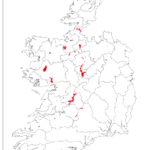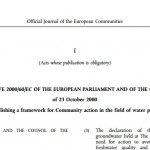Invasive species are a significant pressure impacting 42 or 1.8%…
Significant Pressures: Hydromorphology
Changes to the hydromorphology ranks as the second most significant pressure in surface water bodies. Activities that impact on the hydromorphological condition have been identified as significant pressures in just under one-third of all river waterbodies considered ‘At Risk’ of not achieving their environmental objective. This is based on the most recent characterisation assessment using data up to 2021.
What is hydromorphology?
The hydromorphology of a waterbody describes its physical characteristics in terms of the movement of water flows and levels (‘hydro’), and the structure and form of the bed, banks and riparian zones and how they function within the surrounding landscape (‘morphology’). Good hydromorphological conditions are required to create and maintain diverse aquatic habitat for invertebrates, fish and plants, which in turn support healthy aquatic ecosystems and good ecological status.
Hydromorphological condition is assessed in surface water bodies. Human activities that impact on the hydromorphological condition of waters, for example channelisation and straightening of rivers, installation of weirs or other instream barriers, culverting or otherwise installing hard engineering works, and removal of natural features such as sand and gravel banks and riparian vegetation, are known as hydromorphology pressures.







